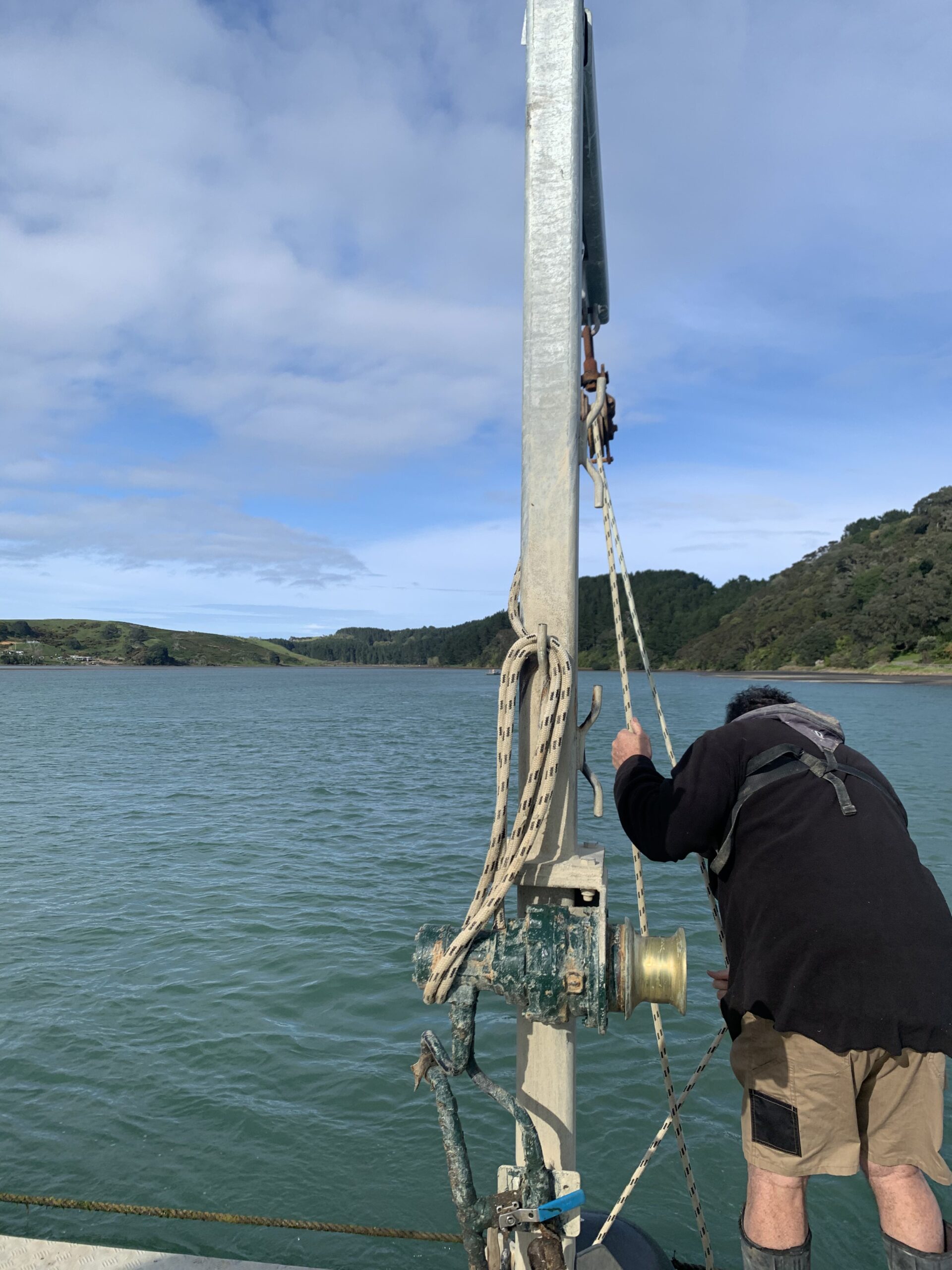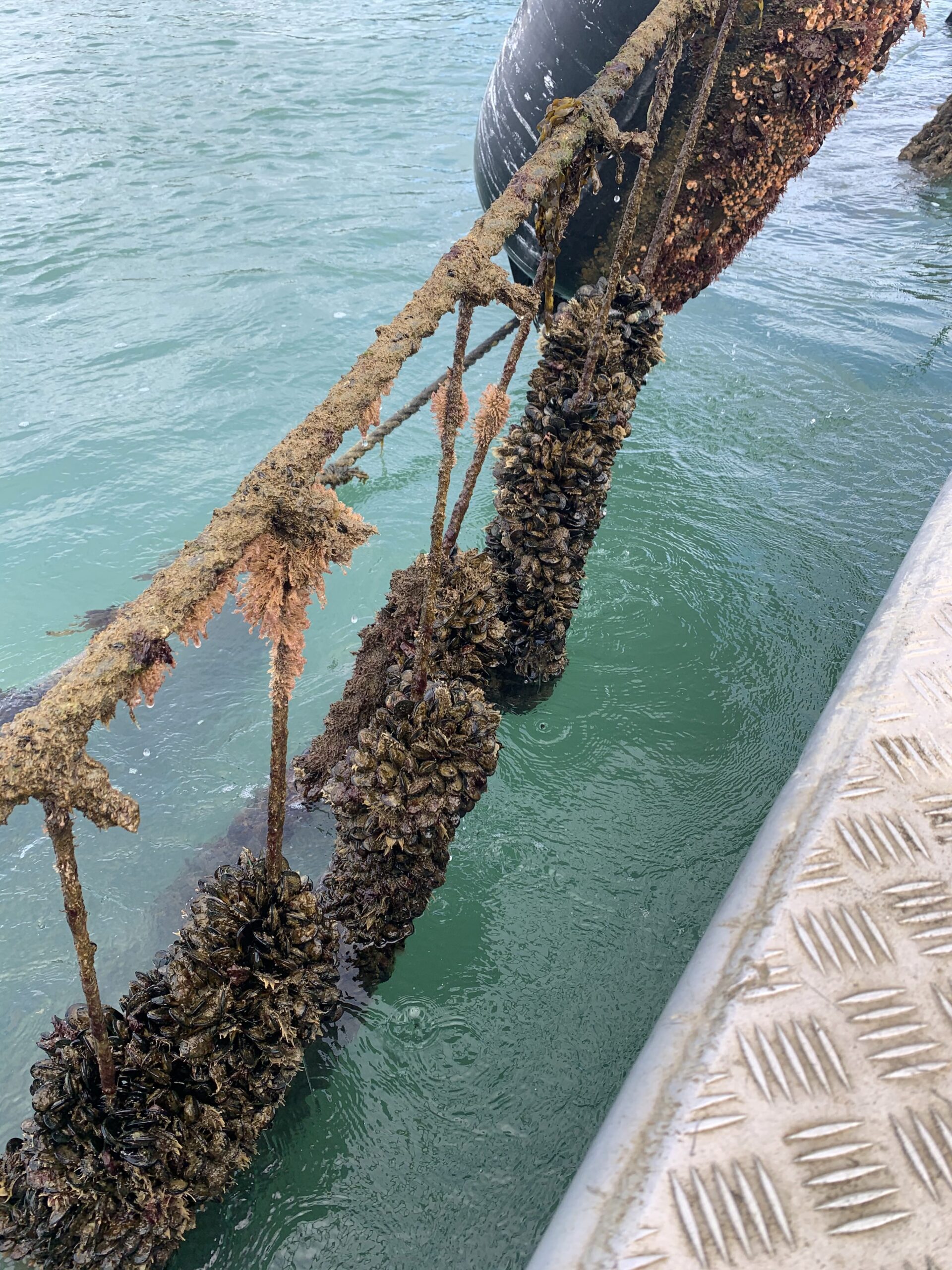
Kayleb Himiona
Ngāi Tūhoe
Tonganui Scholarship recipient 2023
New Zealand’s aquaculture plan emphasises Māori inclusivity. In response, Māori have heavily invested in mussel (kākāriki kutai) production by expanding ownership. The economic success hinges on high-quality mussel seed (“spat”), however, Māori are excluded from engagement in supplying spat to support the growth of their aquaculture aspirations. Around 80% of the spat supply for this industry is harvested from Te-Oneroa-a-Tōhē without any involvement or economic return to iwi as most catch entitlements are owned and harvested by large corporations.
Kayleb’s research devises alternative means of producing high-quality kutai spat from catchment farms. The use of low technological and commercially applicable approaches can be used efficiently to remove spat for subsequent aquaculture purposes and would provide Maori operations with a dependable source of spat. The research marks his entry into a pioneering area of aquaculture research, and being the first rangatahi Māori in this field, he will be qualified to provide valuable direction to the rapidly growing aquaculture sector, ensuring meaningful engagement and positive outcomes for all involved.
“This scholarship aids in implementing innovative approaches, covering research expenses and specialised training, significantly advancing the project’s feasibility. This funding directly enables the exploration of effective methods, including testing and refinement to ensure its reliability. It supports collaboration with experts and stakeholders, facilitating the adoption of these practices across the industry. Ultimately, the Tonganui scholarship plays a pivotal role in driving the successful execution of this research initiative.
These aligned practices, bolstered by the scholarship, ensure environmental stewardship, prosperity, and positive outcomes for all stakeholders. These endeavours also resonate with Vision Mātauranga principles, underscoring the significance of indigenous knowledge and innovation.”
Kaupapa update from Kayleb
What were the major outcomes of this kauapapa?
I have undertaken continuous monitoring within the Whangape Harbor, measuring spat abundances over the course of the past year. Throughout this period, I have successfully completed two distinct phases of research, both focused on exploring efficient methods for removing spat from spat ropes. This involved not only data collection but also a comprehensive analysis to contribute valuable insights to the optimization of seed supply for the Greenshell mussel industry.
Furthermore, I had the opportunity to attend marine farming conferences in Nelson, where I actively engaged with industry professionals and researchers. This experience provided a platform for networking, allowing me to share my research findings and exchange ideas with peers. The conferences served as a crucial forum for gaining exposure to the latest developments and innovations in marine farming, fostering a collaborative environment that enhances the overall impact of my research.
Successful development of sustainable and practical solutions has been identified that can potentially lead to an optimised supply of mussel seed for New Zealand’s Greenshell mussel industry. The project’s interventions are expected to result in increased production, as well as adding security and predictability to complement mussel seed from Te-Oneroa-a-Tōhē. The collaborations with Aotea Spat Catching Farms and Whangape Spat Catching Farms were fruitful, fostering strong partnerships. These collaborations accelerated the involvement of talented and committed Māori individuals in the oceans sector, aspired by the project’s objectives.
What were some of the challenges your kaupapa faced during its implementation?
The research phases focusing on spat removal from spat ropes encountered technical challenges. Developing effective and non-disruptive methods for spat removal proved to be intricate, requiring a thorough understanding of the mussel biology and the delicate nature of spat attachment. Furthermore, the ongoing monitoring of Whangape Harbor faced logistical challenges, such as adverse weather conditions and logistical constraints in accessing certain areas for data collection.
Overcoming these challenges required careful planning and flexibility in adapting monitoring schedules. Lastly, effectively communicating complex scientific findings to a diverse audience, including industry stakeholders, Māori communities, and policymakers, posed a challenge. Ensuring that the knowledge generated from the project was accessible and understandable to all parties required clear and tailored communication strategies.
How did this kaupapa benefit from the Tonganui Scholarship?
The funding has allowed for comprehensive research, experimentation, and development of innovative solutions. It has enabled me to explore and implement novel methodologies to address challenges and achieve project goals. Furthermore, the funding has provided the necessary resources, including equipment, technology, and materials, essential for the successful implementation of the project.
What are your future plans for this kaupapa?
This kaupapa will persist throughout the remaining duration of my PhD and extend beyond the scope of my academic studies. The upcoming phase of research involves an extended month-long stay at Whangape Harbour, generously hosted by Muriwhenua. During this period, the following objectives will be pursued:
1. To discern the optimal duration for spat rope deployment, aiming to maximize the yield of harvestable spat within the span of a month.
2. To employ spat removal methods on intermittently deployed catching ropes, exploring the potential for generating viable single-seed spat.
The findings will not only advance the scientific understanding of spat deployment dynamics but also have practical implications for sustainable practices within the marine environment.
Extending beyond my PhD, knowledge gained from this research will be implemented into aquaculture training programmes with tangata whenua with the specific focus on elevating this new economic potential to empower local iwi. The continuity of this kaupapa beyond the academic realm underscores a commitment to long-term contributions to both scientific knowledge and the well-being of the marine ecosystem.








